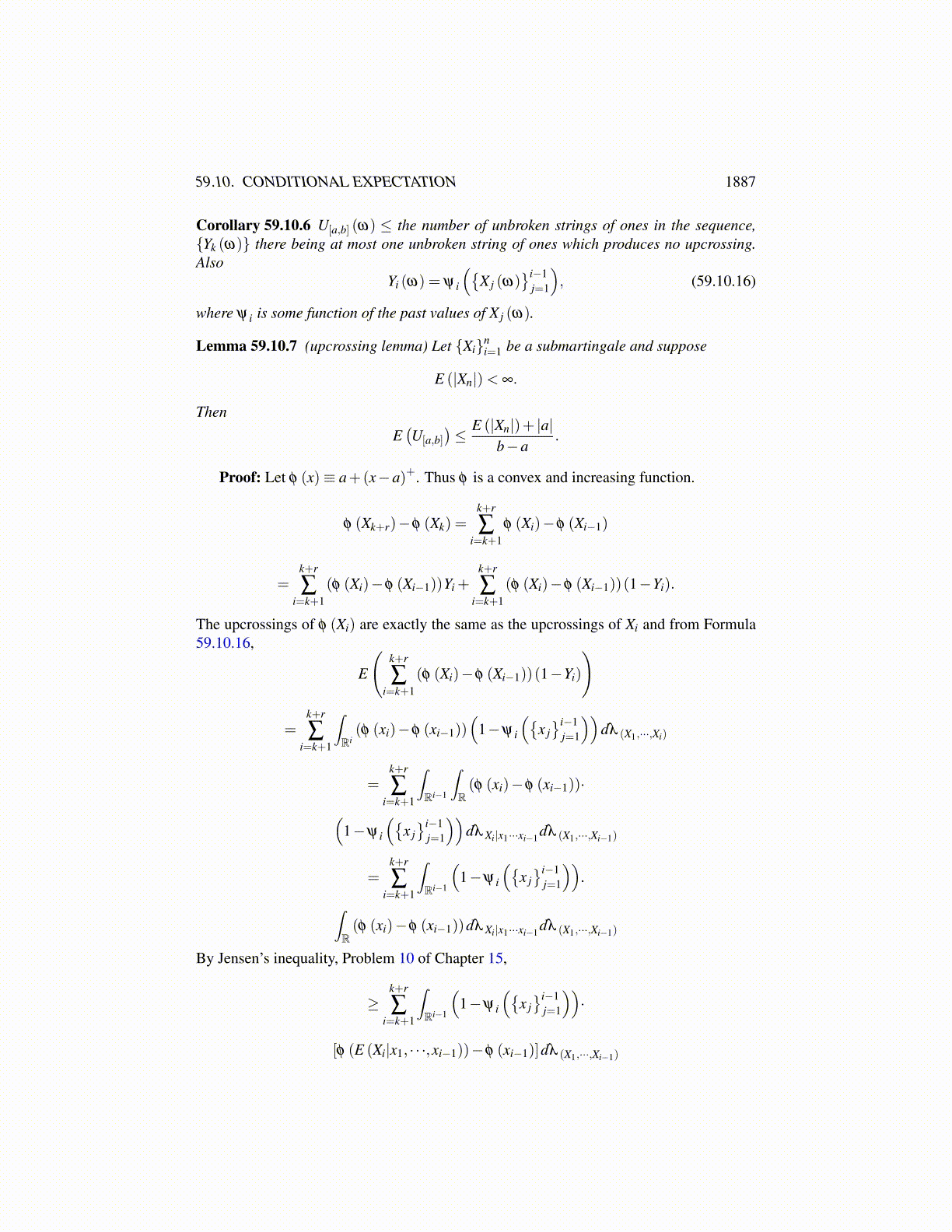
59.10. CONDITIONAL EXPECTATION 1887
Let M consist of all Borel sets of (Rp)n such that∫Rp· · ·∫Rp
XE (x1, · · · ,xn)dλ X1 · · ·dλ Xn =∫(Rp)n
XEdλ (X1,··· ,Xn).
From what was just shown and the definition of (ν1×·· ·×νn) that M contains all setsof the form ∏
ni=1 Ei where each Ei ∈ Borel sets of Rp. Therefore, M contains the algebra
of all finite disjoint unions of such sets. It is also clear that M is a monotone class andso by the theorem on monotone classes, M equals the Borel sets. You could also notethat M is closed with respect to complements and countable disjoint unions and applyLemma 12.12.3. Therefore, the given random vectors are independent and this proves theproposition.
The following Lemma was proved earlier in a different way.
Lemma 59.9.6 If {Xi}ni=1 are independent random variables having values in R,
E
(n
∏i=1
Xi
)=
n
∏i=1
E (Xi).
Proof: By Lemma 59.9.4 and denoting by P the product, ∏ni=1 Xi,
E
(n
∏i=1
Xi
)=
∫R
zdλ P (z) =∫Rn
n
∏i=1
xidλ (X1,··· ,Xn)
=∫R· · ·∫R
n
∏i=1
xidλ X1 · · ·dλ Xn =n
∏i=1
E (Xi).
59.10 Conditional ExpectationDefinition 59.10.1 Let X and Y be random vectors having values in Fp1 and Fp2 respec-tively. Then if ∫
|x|dλ X|y (x)< ∞,
we define
E (X|y)≡∫
xdλ X|y (x).
Proposition 59.10.2 Suppose∫Fp1×Fp2 |x|dλ (X,Y) (x)< ∞. Then E (X|y) exists for λ Y a.e.
y and ∫Fp2
E (X|y)dλ Y =∫Fp1
xdλ X (x) = E (X).
Proof: ∞ >∫Fp1×Fp2 |x|dλ (X,Y) =
∫Fp2
∫Fp1 |x|dλ X|y (x)dλ Y (y) and so∫
Fp1|x|dλ X|y (x)< ∞
, λ Ya.e. Now ∫Fp2
E (X|y)dλ Y